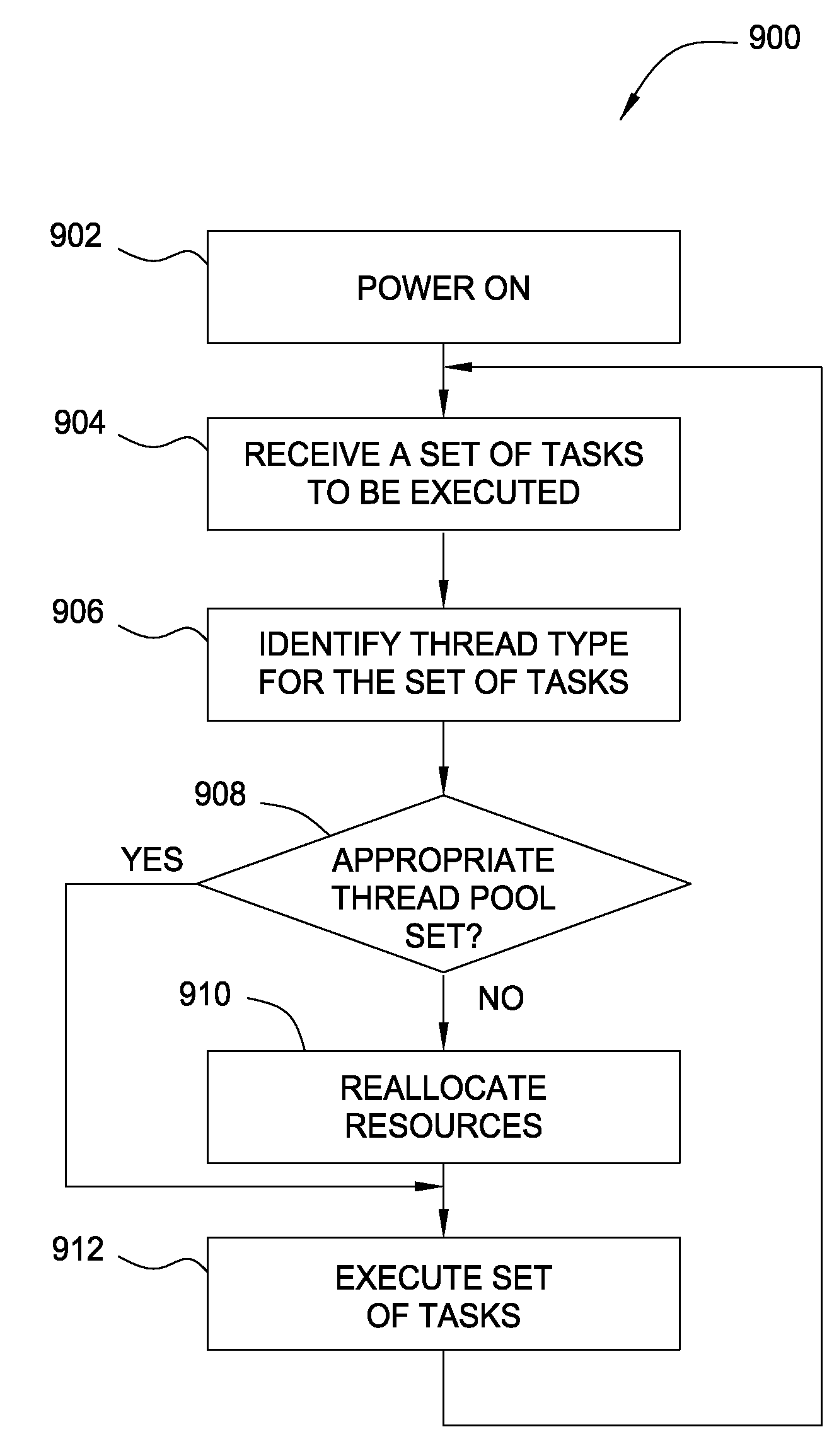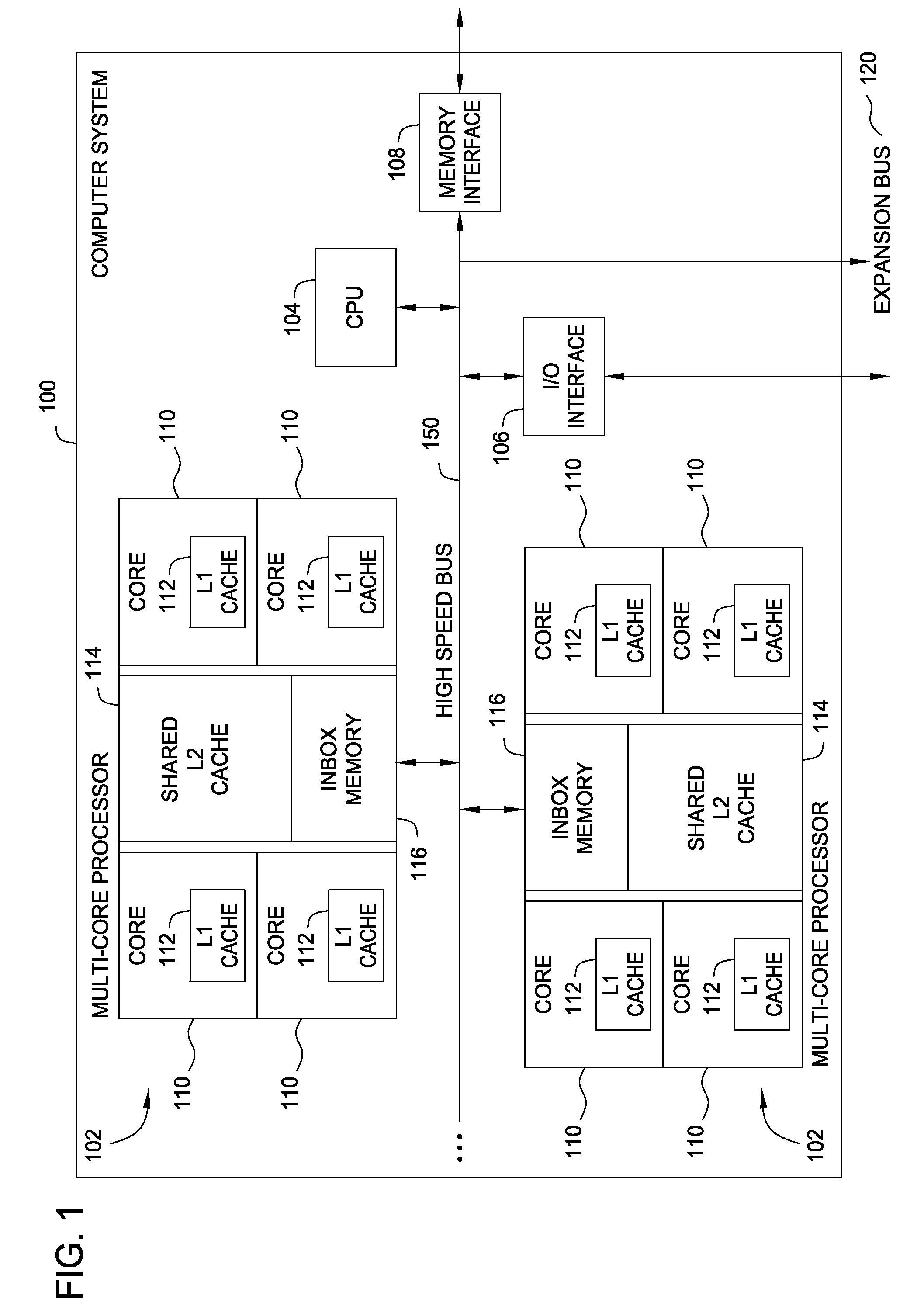Two-Tiered Dynamic Load Balancing Using Sets of Distributed Thread Pools
a dynamic load and pool technology, applied in the field of computer processors, can solve the problems of rasterization suffering from some drawbacks, using relatively low amounts of computational power, and modern monitors display images
- Summary
- Abstract
- Description
- Claims
- Application Information
AI Technical Summary
Problems solved by technology
Method used
Image
Examples
Embodiment Construction
[0029]Embodiments of the current invention provide a method and apparatus for utilizing memory. The method includes an implementation of macro-dynamic load balancing, as well as, an employment of micro-dynamic load balancing. Macro-dynamic load balancing includes determining the optimal way to distribute work among the sets of thread pools, by selectively increasing or decreasing the number of thread pool sets, the size of each thread pool set, or the work flow provided to each thread pool set. While, micro-dynamic load balancing consist of dividing a plurality of threads into sets of thread pools based on a plurality of different thread “types,” wherein each thread pool may have a configurable and dynamic number of threads that share a work set to be completed. As each thread completes a task, the thread retrieves an additional task from the set of shared work.
[0030]In the following, reference is made to embodiments of the invention. However, it should be understood that the invent...
PUM
 Login to View More
Login to View More Abstract
Description
Claims
Application Information
 Login to View More
Login to View More - R&D
- Intellectual Property
- Life Sciences
- Materials
- Tech Scout
- Unparalleled Data Quality
- Higher Quality Content
- 60% Fewer Hallucinations
Browse by: Latest US Patents, China's latest patents, Technical Efficacy Thesaurus, Application Domain, Technology Topic, Popular Technical Reports.
© 2025 PatSnap. All rights reserved.Legal|Privacy policy|Modern Slavery Act Transparency Statement|Sitemap|About US| Contact US: help@patsnap.com



